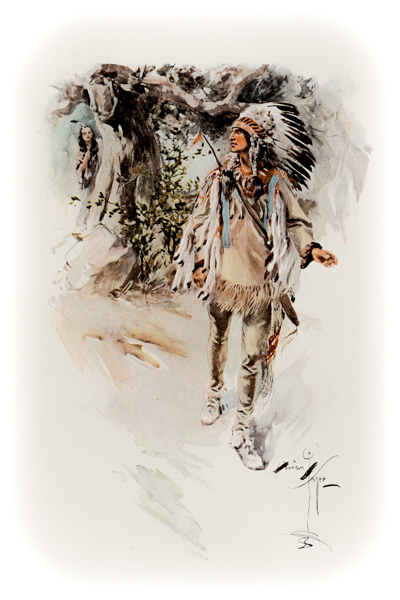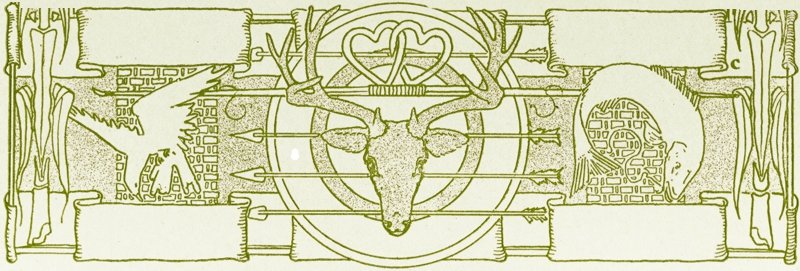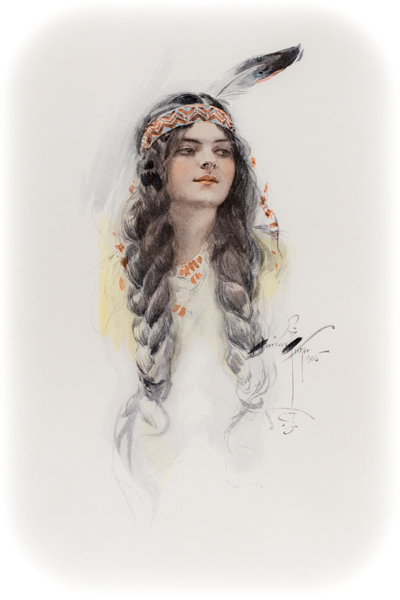

CONTENTS

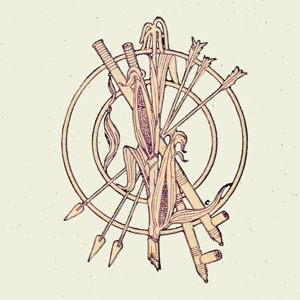
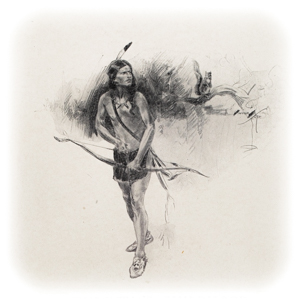
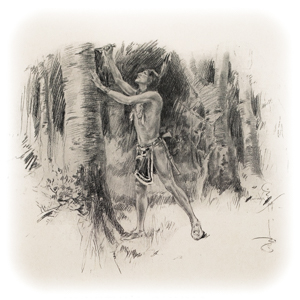
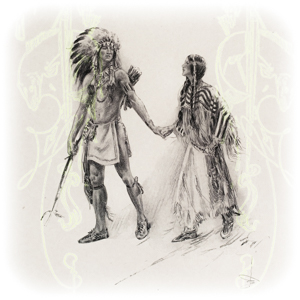
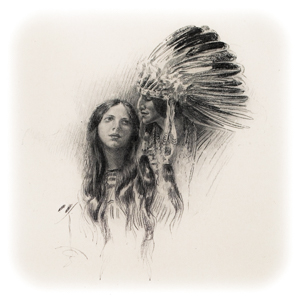
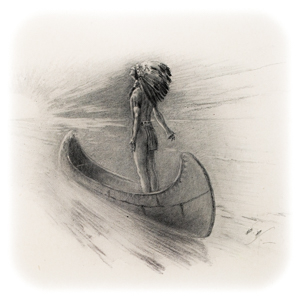











Hiawatha—our hero. His birth the fulfilment of the promise made by the Great Spirit and this is the story of his life. He is The Beloved, The Deliverer of the Nations, and his people proclaimed him Strong-Heart and Loon-Heart. He is dedicated to bringing peace and prosperity to his people. He is the son of Nokomis’ daughter, Wenonah, and Mudjekeewis, the West Wind.
Minnehaha—his beloved, his wife. She is alternately known as Laughing Water—the literal meaning of her name in the Dakota language. She is the daughter of the old Dakota arrow-maker; named after the waterfall near her home.
Nokomis—his grandmother, Daughter of the Moon. She is a goddess that accidentally fell to earth and then gives birth to Wenonah, Hiawatha’s mother. Wenonah dies of sorrow and regret soon after Hiawatha is born and Nokomis raises him. The name means grandmother in Ojibwe.
Gitche Manito—the Great Spirit, the Master of Life, the creator, the Mighty.
Iagoo—the boaster. A traveler, oral historian and teller of fantastic tales, often self-aggrandizing, therefore “the boaster.” Friend of Nokomis; a hunting-bow maker.
Mudjekeewis—the West Wind, Hiawatha’s father. He became Kabeyun when he became the Father of the Winds, assigning the West Wind to himself and the other winds to his three sons.
Chibiabos—one of Hiawatha’s two best friends. “The best of all musicians” and “the sweetest of all singers.”
Kwasind—Hiawatha’s other best friend. He is the strongest man in the land, but a gentle soul. A great swimmer and diver. Misunderstood as a child.
Pearl-Feather—his name the translation of “Megissogwon,” a great and evil magician. Brings pestilence to the wetlands.
Pau-Puk-Keewis—a charming, handsome mischief-maker and malcontent. A fantastic dancer and skilled in games of skill and hazard. “Loved by the women, dismissed by the men.” He is called a yenadizze—an idler, a gambler.
Osseo—a magician and son of the Evening Star. Old, poor and ugly but with a beautiful spirit.
Oweenee—willful, wayward, loving, true. The youngest daughter of a North-land hunter, fairest of her sisters; marries Osseo
Puk-Wudjies—the Little People: fairies and pygmies. They are envious and mischievous.
Nawadaha—the historian, storyteller, singer and musician who tells this story to the white man.
Wenonah—the Lilly of the Prairie, first-born daughter of Nokomis and Hiawatha’s mother.
Adjidaumo—tail-in-air, Hiawatha’s little friend the squirrel
Mondamin—the Friend of Man. sent by Gitche Manito to try Hiawatha. Another word for corn and cornstalk.
Mama—the woodpecker; told Hiawatha the Pearl-Feather’s vulnerability.
the ancient arrow-maker—Minnehaha’s father. Also called the old arrow-maker.
Face-in-a-Mist—Iagoo’s nephew; Pau-Puk-Keewis’ meshinauwa—his attendant.
the Black-Robe—the Priest of Prayer, the “pale-face with the cross upon his breast,” a French Jesuit Catholic priest.
Ahkosewin—the evil spirit that brings on fever
Bukadawin—the evil spirit of famine
The Four Winds—the North, South, East and West Winds
Gitche Manito—the Great Spirit, the Master of Life, the creator, the Mighty
Kabeyun—the Father of the Winds and the West Wind; was Mudjekeewis
Kabibonokka—the North Wind, wild and cruel; son of Kabeyun
Mitche Manito—the Spirit of Evil, the Dreadful
Nee-ba-naw-baigs—the Spirits of the Water
Nepahwin—the Spirit of Sleep
Ojeeg—the Summer-Maker, the Fish Wease; he makes a hole in heaven to let out the summer weather
Old Man of the Mountains—the spirit that dwells in the mountains; the Manito of the Mountain
Pauguk—death
Peoban—old man Winter
Segwum—the youthful stranger, Spring
Shawondasee—the South Wind, fat and lazy; son of Kabeyun
Wabun—the East Wind, sad and lonely; son of Kabeyun
Unktahee—the god of water; the god of the Dakotas
Chibiabos—Guardian of the Dead. This honor awarded to him after his death.
Keewaydin—the Northwest Wind, promised to Hiawatha after his death.

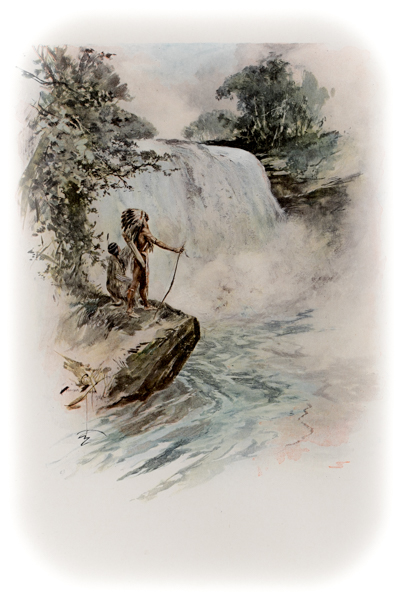
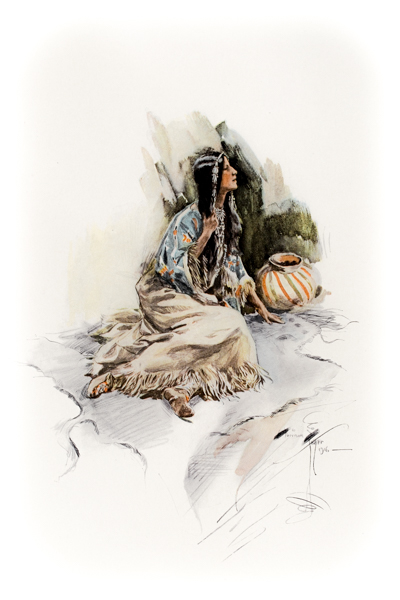

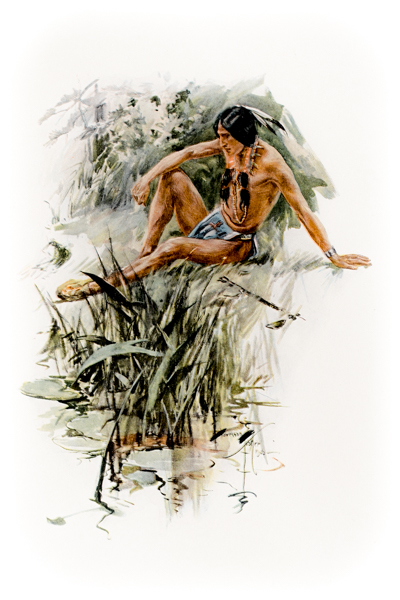
Gitche Gumee—Big-Sea Water; Lake Superior, the largest of the Great Lakes of North America.
Island of the Blessed—“in the Kingdom of Ponemah, in the Land of the Hereafter.” It takes four days to travel there after death.
Minnehaha Falls—“in the land of the Dakotahs.” It is near where Minnehaha Creek empties into the Mississippi River at Minneapolis, Minnesota.
Mississippi—the mighty river that bisects the lower part of North America.
Mountains of the Prairies—the Badlands in the South Dakota prairie, also known as the mountains in the prairie.
Nago Wudjo—the Grand Sable sand dunes and beaches of Lake Superior.
Pauwating—a swift-running waterway. Perhaps the St. Mary’s River, the waterway that drains Lake Superior into Lake Huron.
The Pictured Rocks—thirteen miles of colorful sandstone cliffs on Lake Superior shore with the Upper Peninsula of Michigan, between Sault Ste. Marie and Marquette.
the Red Pipe-stone Quarry— is in Pipestone National Monument in Minnesota, on the border with South Dakota.
the Rocky Mountains—the Kingdom of the West Wind. The mountain range in the western part of North America whose eastern foothills touch the prairie.
Taquemenaw—the Tahquamenon River, a river in the Upper Peninsula of Michigan that empties into Lake Superior at Whitefish Bay.
Tawasentha—the name of the vale where Longfellow places Hiawatha’s village. In real life is the name of an Iroquois burial ground near Normanskill Creek in Albany County, New York.
Thunder Mountain—the real-life Thunder Mountain is quite a ways from this epic’s locations. It is in Utah, in Bryce Canyon National Park.
the Valley of Wyoming—a valley in northeastern Pennsylvania, originally populated by the Iroquois-speaking Scahentoarrhonon people.
Wabasso—the great snowy North on the other side of the Great Lake; today’s Canada. Also called the Land of the White Rabbit.


